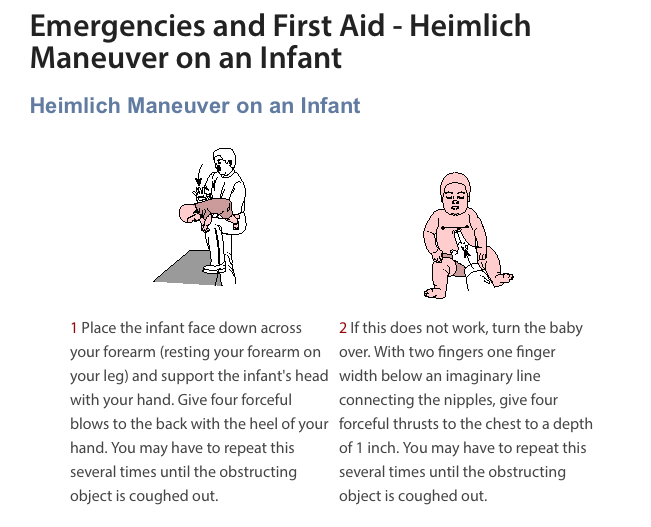Anything that can fit into a cardboard toilet paper roll is a choking hazard. It is important to understand the difference between gagging and choking. Gagging is a safety reflex that prevents choking. If your baby is gagging, they are likely making noises and still able to breathe. Gagging is a normal part of learning to eat. If your baby is choking or gagging, stay near by and allow her to continue to cough. This is the best way to clear her airway.
When a child is choking, they are unable to breathe as their airway is blocked. They may look wide-eyed and scared and their skin may start to change color. They may make odd noises or no noise at all. It is not recommended that you put your finger in your baby’s mouth to try to clear out the airway because you could lodge it further down. Besides if the item or food is still in their mouth, they are likely gagging and trying to clear their airway themselves. Choking occurs when the obstruction is further down in the airway. If this occurs, your baby needs immediate help. The best thing to do is begin the Heimlich maneuver. If your baby doesn’t immediately begin to breathe, ask someone to call an ambulance. If you are alone, give the baby two minutes of the Heimlich maneuver, then call an ambulance. Also call an ambulance immediately if the baby has a heart condition if the baby loses consciousness.
Be familiar with the Heimlich Maneuver for infants:
 References:
References:
Harvard Health Publishing, Harvard Medical School. Retrieved from https://www.health.harvard.edu/staying-healthy/emergencies-and-first-aid-heimlich-maneuver-on-an-infant
AAP. 2015. Responding to a choking emergency. American Academy of Pediatrics. https://www.healthychildren.org/English/health-issues/injuries-emergencies/Pages/Responding-to-a-Choking-Emergency.aspx [Accessed February 2017]
American Red Cross. Undated. Child and baby CPR. http://www.redcross.org/take-a-class/cpr/perfoming-cpr/child-baby-cpr [Accessed February 2017]

